Before I start with the report of today’s tour, a brief explanation about the tasting notes in these reports. First of all, tasting notes are always personal. There are 18 experienced wine tasters in our group and we usually all have different tasting notes for the same wine. We usually agree about technical aspects like high acidity or use of oak, but especially the appreciation of a wine can differ considerably. Second, in these reports I don’t write full tasting notes but just my main impression in a few words. That doesn’t always do the wines justice, but otherwise these reports would become too long.
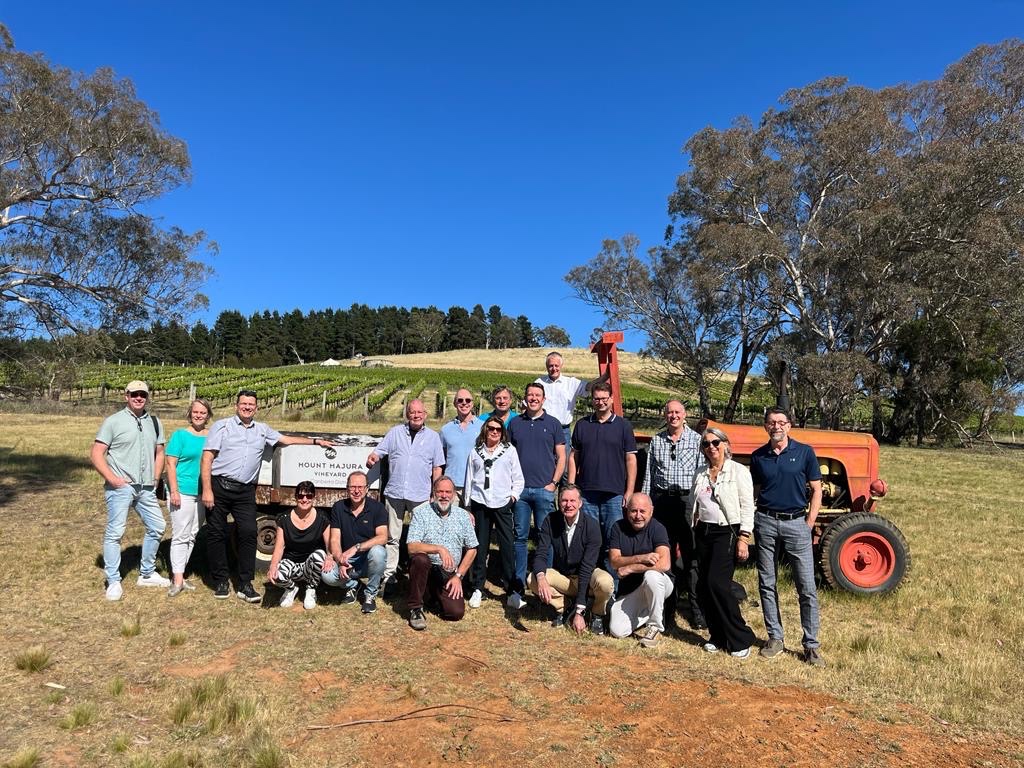
Our second day of discovering the Canberra wine district starts with a tasting at Mount Majura. This vineyard was established by Edgar Riek, the third of the founding fathers of the Canberra wine district (you can read about the other two in the previous post). Edgar established the vineyard here in 1988 because it has a limestone soil that is excellent for wine production. He tried to make Pinot Noir here like in Burgundy, which also has limestone soil, but the climate was too different and the efforts to make good still Pinot Noir were finally abandoned in 2017. Since 2000 the vineyard has had new ownership and it has been expanded from the original 1 hectare to 10 hectares. Still it is a small winery that produces less than 50,000 bottles annually.
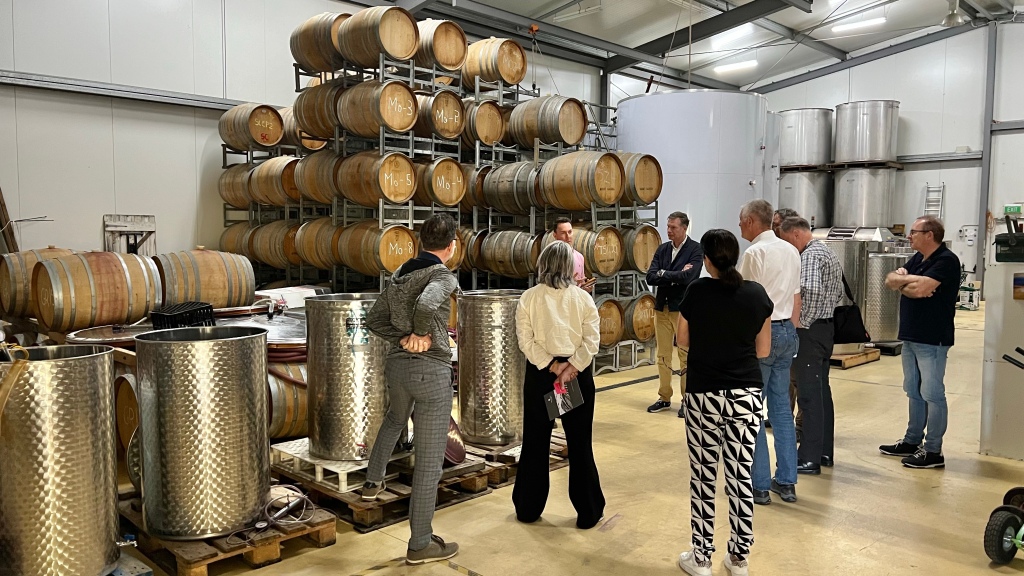
Mount Majura specializes in Tempranillo, the grape variety from Rioja and Ribera del Duero in Spain. Scientists compared climate data of wine growing areas from all over Australia with climate data from famous European wine growing areas, and discovered that the Canberra District’s climate is quite similar to that of Rioja. This made the new owners of Mount Majura decide to plant Tempranillo here. It ripens perfectly here. Other wineries followed Mount Majura’s example, as there are now over 30 Tempranillo wines produced in the Canberra District. Low acidity is usually the weakness of Tempranillo, which is fixed here in Canberra. Mount Majura uses a sprinkler system for frost protection, as luckily there is enough water available to do this. The slope also helps to drain the cold down the hills.
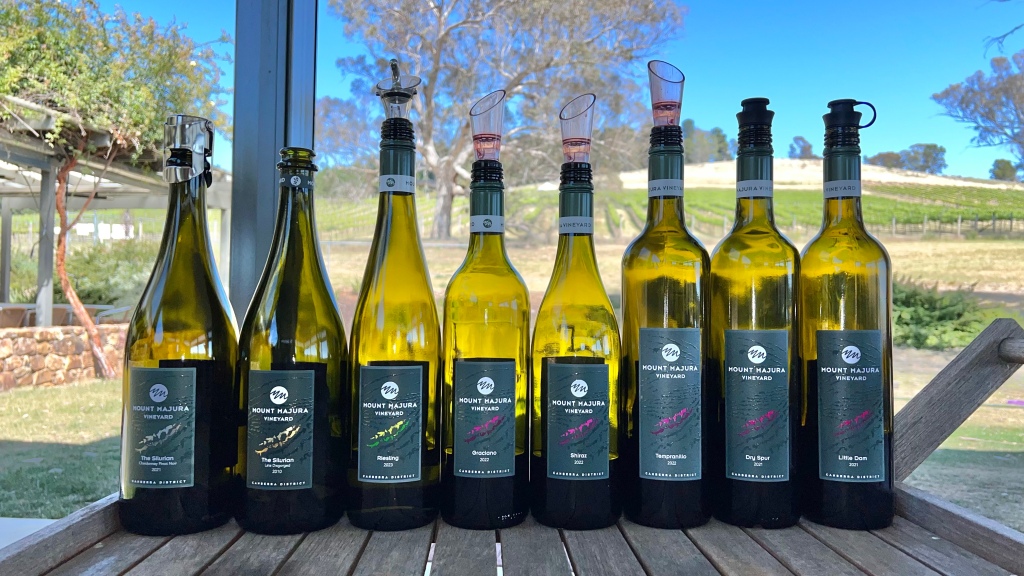
We tasted the following wines here:
- The Silurian 2021 (sparkling with second fermentation in the bottle, aged 2 years on the lees, 69% Chardonnay, 31% Pinot Noir, picked early for high natural acidity): very light color, looks almost like water, very clean and crisp.
- The Silurian 2010 Late Disgorged (sparkling with second fermentation in the bottle, aged 12 years on the lees, 53% Chardonnay, 47% Pinot Noir): nutty aroma but fresh, with great balance and complexity.
- Riesling 2023: green apple, high acidity but balanced.
- Graciano 2022 (late ripening, harvested April 28): eucalyptus, peppery, fresh
- Shiraz 2022 (10 months in French oak, 20% new): eucalyptus, ripe soft tannins, clean and balanced, medium bodied
- Tempranillo 2022 (10 months in French oak, 20% new): nice tannins, fresh, even more different from Rioja or Ribera del Duero than usually due to the cool vintage
- Dry Spur 2021 (Tempranillo, warmest vineyard with northern exposure): spicy, oak, elegant
- Little Dam 2021 (Tempranillo): more fruity, higher acidity, elegant

Our final tasting in the Canberra district is at Nick O’Leary.

He was 26 years old and winemaker at Hardy’s when Hardy’s decided to divest from the Canberra district in 2006. He then started his own winery, focussing on Riesling and Shiraz. In 2012 and 2013 he won New South Wales wine of the year twice in a row.

Nick named the single vineyard wines after fishing spots in the Snowy Mountains. He has built out the company over the years, and has recently added a restaurant. The annual production is about 240,000 bottles.
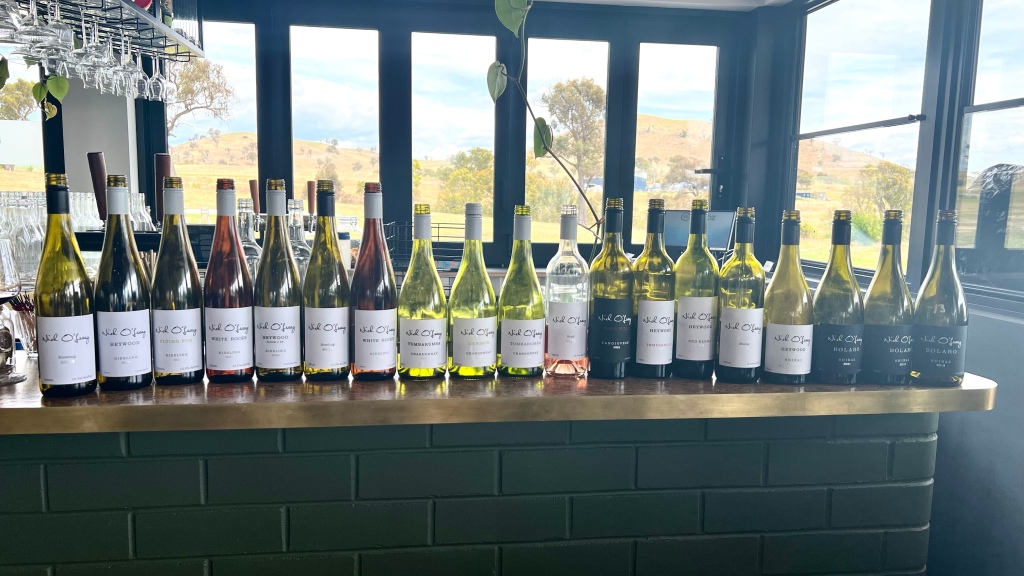
At Nick O’Leary we tasted a lot of wines:
- White Label Riesling 2023: floral, juicy, balanced between residual sugar and acidity.
- Heywood Riesling 2023: green apple, crisp.
- Flying Fox Riesling 2023: green apple, more body.
- White Rocks Riesling 2023: crisp, young.
- Heywood Block 3RS Riesling 2023 (aged in second or third fill Austrian oak, 13 grams of residual sugar): slightly sweet, oak, creamy, balanced.
- White Label Riesling 2016: warm vintage, petrol, balanced, complex. White Rocks Riesling 2015: petrol, acidity, creamy, complex.
- Tumbarumba Chardonnay 2022: mineral, balanced.
- Denison Chardonnay 2022: caramel, oak, balanced.
- Tumbarumba Chardonnay 2018 (first vintage this was produced): mineral, creamy, balanced, less acidic than the 2022.
- Rosé 2023 (50% Pinot Noir, 30% Nebbiolo, 20% Sangiovese): fruity, balanced.
- ‘Four Mile’ Sangiovese 2021: spicy, soft ripe tannins, fresh, medium bodied.
- Heywood Tempranillo 2021 (part maceration carbonique): red fruit, tannins.
- Red Blend 2019 (40% Sangiovese, 40% Tempranillo, 20% Shiraz): jammy fruit, fresh, soft tannins. White Label Shiraz 2021: fruity and soft.
- Heywood Shiraz 2021: black cherries, balanced, fresh.
- Bolaro Shiraz 2021: needs time in the bottle.
- Bolaro Shiraz 2019: caramel, oak, ripe tannins.
- Bolaro Shiraz 2013: jammy fruit, velvety tannins, complex. Well deserved winner of wine of NSW of the year.
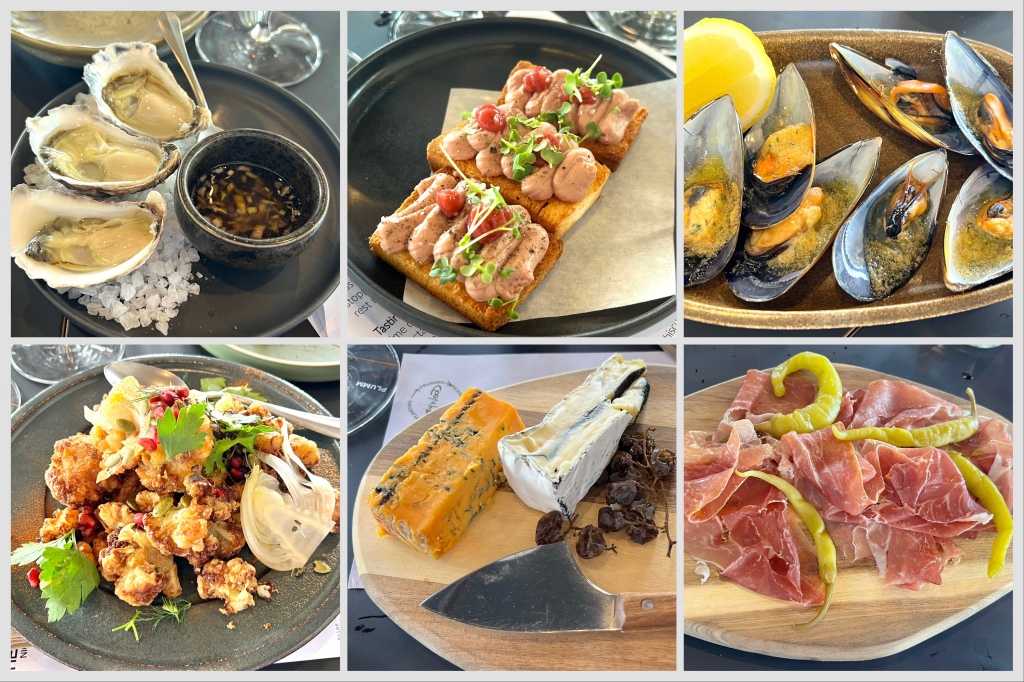
The wine tasting was accompanied by lunch:
- Rock oyster with 15 years old muscatel mignonette
- Baked mussels with chilli, garlic butter, and lemon
- Whipped chicken liver parfait on brioche toast with rhubarb
- Fried cauliflower with smoked chilli salt, pomegranate and guindillas Cheese, prosciutto, and chillies
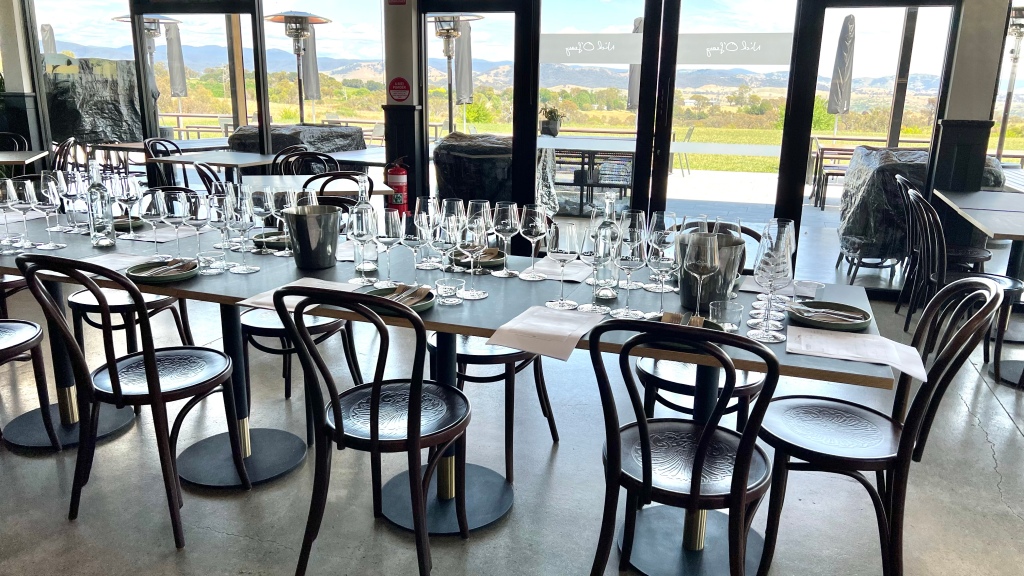


Hmm! Have a pile of on line supermarket stuff arriving tomorrow – am very, very old-fashioned > just added a notebook for all the notes from your notes . . . not going to let this opportunity go past ! Earlier sent a notice to all my Oz friends on various lists to watch out for what this Dutch group is getting up to . . . LOVED your lunch . . . darn it > that is the third lot of oysters for you . . . well, none of us can afford to buy any . . . and chicken liver pates, parfaits, mousses . . . those came straight after mother’ milk for me . . . oh well: I guess we’ll wait for the next instalment with faces green . . . bestest E
LikeLiked by 1 person
You should go eat at Nick O’Leary; it’s good and at a reasonable distance.
LikeLiked by 1 person